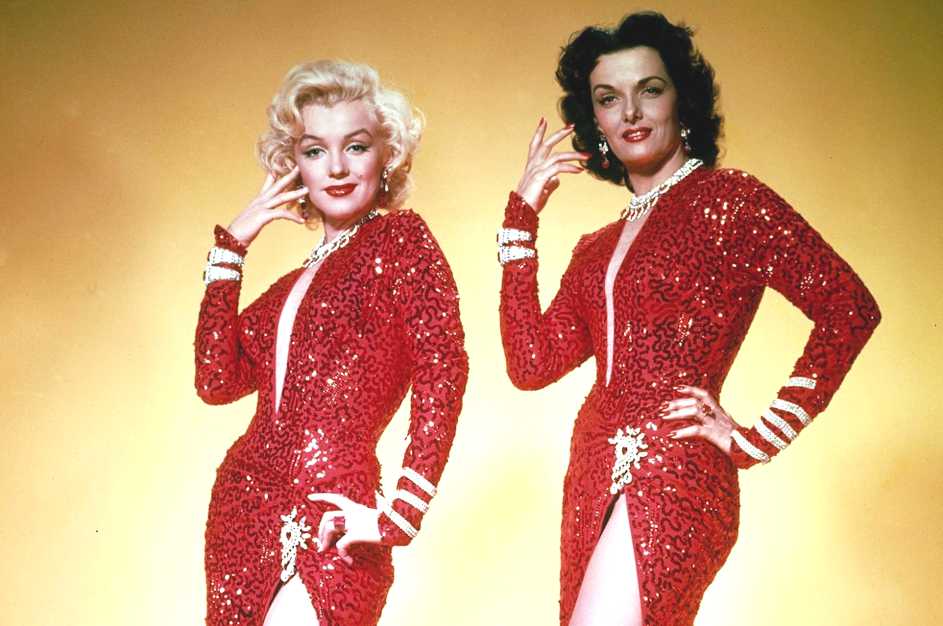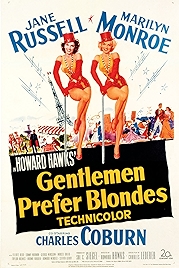A movie for every day of the year – a good one
26 April
Anita Loos born, 1889
On this day in 1889, or possibly 1888, Corinne Anita Loos was born. Always cagey about her true age, Anita became best known for her comic novel Gentlemen Prefer Blondes. She grew up in a theatrical family – her father managed a theatrical stock company – and she was performing on stage as a young girl. Her father wrote one-act plays for the company and a precocious Anita started turning them out too. Having seen an early silent film in 1911 she decided to turn her hand to a screenplay for one-reelers. Over the next few years she wrote 105 scripts, all but four of which were made into films. She moved to Hollywood, where she was put on the staff at Triangle Films by DW Griffith. Her scripts for Douglas Fairbanks made him a star and she became a star herself. She married John Emerson, who took the credit for much of her work, spent her money and had numerous affairs with other women. Loos claimed that at least his philandering allowed her to form relationships of her own. She became close to the intellectual HL Mencken, whose preference for bimbos rather than girls with brains became the theme for her most famous work, Gentlemen Prefer Blondes, which started life as a series of pieces for Harper’s Bazaar. It became the best-selling book of 1925 and a worldwide hit, and was made into a film in 1928.
Gentlemen Prefer Blondes (1953, dir: Howard Hawks)
The film about a pair of chesty dames with an eye on the main chance is also one of the great Technicolor movies, its larger than life hues the ideal fit for a story about two statuesque women, one out for money, the other for love. Marilyn Monroe and Jane Russell are the stars, both not so much edging into camp as diving in head first. Spangles, lip gloss, exaggerated curves, the feather head-dresses, it’s the stuff of a drag queen’s dreams, with Monroe as the dizzy romantic, Russell as her more case-hardened pragmatist, both searching for men, none of whom really get much in the way of screen time.
The stars play lounge singers and the action takes place mostly on a ship bound for Europe, the ideal excuse and setting for a string of musical numbers, including the famous Diamonds Are a Girl’s Best Friend. That’s Monroe’s number, so iconic it became her signature. Russell, meanwhile, gets Ain’t There Anyone Here for Love, which she sings with a team of Olympic athletes in their gold lame swimming trunks. No, it’s not an intellectual film, nor does it make many claims to seriousness of any sort. But it’s unusual for its brash portrayal of the transactional nature of relationships – men want flesh, women want cash – and for the fact that it’s a pair of pally women at its centre, with Monroe and Russell opening the film with their “Just two little girls from Little Rock” number, which nails the absurdist colours to the mast – the last thing these girls are is little.
This is the film that made Monroe a bombshell superstar and she has the persona perfected – breathy, dizzy, a woman so saturated in sexiness it’s a disability. Interestingly, its director Howard Hawks, who hated working on it, makes a fantastic job of only his second musical (the first being the Danny Kaye vehicle A Song Is Born), thus cementing his reputation as probably the greatest all-round director of Hollywood’s golden age, Gentlemen Prefer Blondes ticking the musical box, alongside the classic comedy (Bringing Up Baby), the gangster movie (Scarface), the noir (The Big Sleep) and the western (Red River).
Why Watch?
- Monroe and Russell, one of the great gal-pal double acts
- Harry J Wild’s astonishingly vivid Technicolor cinematography
- The gowns of William Travilla, known simply as Travilla
- The Hoagy Carmichael and Jule Styne songs
Gentlemen Prefer Blondes – at Amazon
I am an Amazon affiliate
© Steve Morrissey 2014

